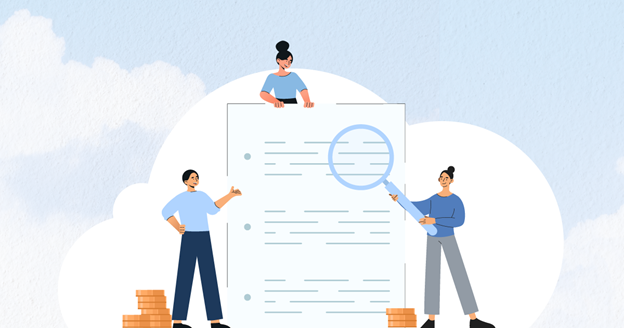Businesses have started realizing the importance of adopting Cloud FinOps as a culture within their organizations. Its popularity and understanding of FinOps has skyrocketed in the past 5 years. Even senior leaders in the IT industry consider achieving cloud cost efficiency a top priority. This has led to a necessary advancement in FinOps solutions that could help businesses optimize their cloud spending. Numerous third-party companies have started popping up offering tools, methodologies, and strategies that could help you in your FinOps optimization throughout your crawl, walk, and run journey.
These vendors promise to add value to your efforts across the Inform, Optimize, and Operate phases.

Inform Phase: Through this phase, FinOps solutions can help you with comprehensive reports and actionable insights which will enable better reporting, anomaly detection, benchmarking, forecasting, and even budgeting. Some vendors also offer features like tagging and custom notifications which will help you achieve higher cloud cost allocation and visibility across your organization. Tools like – CloudKeeper Lens, Cloudability, CloudCheckr are a few examples of third-party FinOps solutions that offer cloud cost visibility and insights for the inform phase of your Cloud FinOps Journey.
Optimize Phase: Along with the insights from the Inform Stage, FinOps solutions can also empower you to identify and take action on opportunities to optimize your cloud spending through predictive analytics and recommendations based on your current usage patterns. CloudKeeper AZ, Zesty, and DoiT International are a few of the third-party vendors that will enable you to optimize your cloud usage and rates efficiently.
Operate Phase: Finally, in the last phase of your FinOps Journey. FinOps solutions can also help establish a framework for ongoing cloud cost management and cloud governance. This will ensure that your organization maintains optimal cloud usage and cost efficiency over a long period of time. Tools like CloudKeeper, Archera, CoreStack
Understanding Your Cloud Cost Management Needs

Before you start seeking third-party support for FinOps, you must identify and understand your business’s cloud cost management needs. You can do so in 3 quick steps:
- Assessing Current Cloud Spending: Start analyzing your cloud bills and usage reports to understand your cloud consumption patterns. Doing so will help you identify inefficiencies in your FinOps strategy.
- Set goals for FinOps Implementation: Once you understand your challenges and areas of optimization, clearly define your objectives to implement Cloud FinOps practices within your organization. Also, consider the specific outcomes you hope to achieve through this implementation.
- Determining Key Requirements: Once your goals are set, determine the specific features and capabilities you will need to procure to achieve those said goals.
Once you identify the key areas that require third-party assistance, you can then start seeking support.
Key Considerations in Choosing Third-party FinOps Solutions

Here are some key considerations that you must keep in mind while selecting a third-party FinOps Solution provider:
- Features & Capabilities: You must assess the range of cost management features offered by the vendor from cost analysis and reporting to budgeting and even forecasting. Look for granular data that could help you understand where and how your money is being spent. Also evaluate the performance, and accuracy of insights to make an informed judgment. Seek features that allow you to analyze spending trends, identify cost-saving opportunities, and optimize resource utilization.
- Integration with your Cloud Provider: Check whether it seamlessly integrates with your cloud provider or not. Even evaluate the depth of integration and make sure that it doesn’t affect your relationship with your cloud provider.
- Scalability & Flexibility: Consider evaluating the scalability of the FinOps solution to accommodate your current and future business needs. It must be able to handle large volumes of data and scale with your cloud infrastructure as it grows. Also check whether the solution can adapt to the changing cloud environment, such as adding or removing services, adjusting resource allocations, or changing cost management strategies.
- Ease of Use: Evaluate the usability of the solution and assess if it’s able to streamline common tasks with ease or not. Automation is key, assess whether the solution offers capabilities to automate repetitive activities to smoothen your FinOps processes. Also, consider if the solution offers customizations tailored to your specific business needs.
- Security & Compliance: Data security is a very critical factor in evaluating the trustability of a third-party solution. You wouldn’t want your data to be misused in any way. Assess how the solution handles sensitive financial and operational data. Check for certifications and attestations that can ensure the solution is compliant with the latest security standards.
- Customer Support: Assess the levels of support offered by the solution including the responsiveness and incident resolution time. Check for blogs, tutorials, and self-help resources offered by the vendor and check vendor ratings on credible platforms like G2 reviews.
- Pricing: Assess the available pricing models – Usage-based or Subscription-based. You must also evaluate the total cost of ownership of the FinOps services to be able to accurately quantify the ROI and business value of the solution.
- Implementation & Onboarding: Quantify the planning it’ll take to implement the processes, the time it’ll take to migrate your data & set up the solution, and even assess the complexities involved in the training and onboarding processes.
Conduct thorough research on all shortlisted FinOps solution providers across these parameters to assess which vendor suits your needs best. Keep in mind your FinOps requirements & objectives across each phase and only select the FinOps solution that offers the highest Bang for the Buck.


















